For anyone embarking on an adventurous trip or who just needs to cart lots of gear to the base of a crag or to the campsite, a duffel bag is a useful piece of kit.
With possible uses in mind, we evaluated 12 different bags to see how easy they were to use, how versatile they could be and how comfortable they were to carry.
Most had a large main compartment; some had extra pockets on the outside.
They ranged in size from 40 litres, useful for overnight or short trips, right up to 100 litres, which is enough capacity to take lots of expedition gear.
Many of the duffel bags had the option to carry using straps rucksack-style, which makes for a more comfortable travel, but if you already have a backpack on, you will need the option of a conventional carrying mode.
Most were water-resistant and would keep out showers; a few were truly waterproof, so if you are expecting a wet journey, these could be your choice.
We always seem to find ourselves having to get into a bag or adjust its straps at points where we have least time, so duffels that weren’t fiddly to use scored higher.
We also evaluated the bags for overall quality, plus a rating for value for money.
Aquapac TrailProof Duffel 40L
Price: £44.99
Colour: green/grey
Weight: 754g
Stated capacity: 40 litres
Country of manufacture: China
The TrailProof Duffel is made of tough 500 denier polyester-reinforced PVC, with taped seams which, combined with a roll-top closure, enable the bag to achieve an IPX6 stormproof rating – enough to resist a powerful water jet fired at it.
It’s a simple design: one large compartment with the closure running the full length of the bag.
There are two webbing compression straps around the pack, as well as one at each end of the bag. Carrying is via webbing straps with a central handle with hook-and-loop closure allowing it to wrap around the straps.
The Aquapac duffel does not have harness straps.
The webbing compression straps have strong plastic buckles.
To close the bag and to enable it to be waterproof, you align the two fairly stiff webbing edges of the opening, then roll them over, with the narrower hook strip towards you, three times and then press the hook strip against the loop strip to enable a good closure.
It’s important not to overfill the bag as this will make it difficult to roll the top enough times.
The TrailProof Duffel comes into its own in wet environments, so is great for paddlers or anyone who wants to protect their gear against the elements, whether on a rain-lashed campsite or a winter’s day at the foot of a climb.
It’s not designed for immersion, but it will protect against anything short of that as long as the roll-top is correctly fastened.
Weight is low for such a tough-feeling bag, helped by its simple design, though the lack of a carrying harness might restrict its usefulness for some people. The price is good too.
Comfort while carrying the bag was aided by the fact its fairly narrow but long shape minimises knocking against the legs but there are no shoulder straps.
The Aquapac TrailProof Duffel also comes in 70 litre and 90 litre sizes.
Ease of use 20/30
Carrying comfort 23/30
Versatility 15/20
Quality 8/10
Value for money 9/10
Total score: 75/100
Berghaus Expedition Mule Holdall
Price: £60
Colour:
Weight: 1,032g
Stated capacity: 40 litres
Country of manufacture: Vietnam
The Mule can be either carried using its webbing straps, which have a central, soft handle with hook-and-loop closure, or by the harness straps, which incorporate foam padding and also have an adjustable sternum strap. The harness is detachable via four plastic and metal clasps that pass through webbing loops on the body of the bag. The carrying straps can be adjusted for length.
There are also fixed fabric straps at either end of the duffel.
The Mule is made from tough water-resistant fabric and the main zip opens along three sides of the lid to allow easy access to the main compartment. The lid is slightly oversized to provide a lip that covers the zip, helping keep out the rain. The main zip can be locked with your own padlock.
There’s a zipped mesh pocket under the lid, big enough to take documents and a map.
The base of the bag is in thicker, reinforced fabric, and there are compression straps at the side of the body of the duffel to reduce volume if it’s not filled with gear. There are broad webbing daisy chain arrangements down each side for the attachment of accessories or extra strapping.
At one end of the bag is a zipped external pocket. When not being used, the Expedition Mule can be folded into this pocket for storage.
The design of the Berghaus duffel is well thought-out and its fittings are good and solid. The bag can be carried rucksack style, and there’s even a sternum strap to help spread the load and keep things in place.
The bag is fairly wide when being carried by its handles but was still quite comfortable.
The Expedition Mule is also available in 60- and 100-litre versions.
Ease of use 23/30
Carrying comfort 24/30
Versatility 15/20
Quality 8/10
Value for money 8/10
Total score: 78/100
Exped Transit 60
Price: £85
Colour:
Weight: 878g
Stated capacity: 60 litres
Country of manufacture: Vietnam
The Exped bag is another one with lots of nice design features. In standard carry form, the padded handles are fairly comfortable.
There are twin compression straps across the top of the duffel, which connect via metal hooks to webbing loops. These were easy to attach and there are hook-and-loop retainers on the webbing to keep excess strapping neat.
On the base of the bag, two harness straps are tucked away and simply pull out to use. They attach using similar metal hooks to the bottom of the bag and both straps have plenty of foam padding. There is also a fully adjustable sternum strap and all excess webbing can be secured by hook-and-loop closure strips.
There is a strong webbing haul strap too. In effect, when used with the harness deployed, the Transit 60 becomes a rucksack with almost the same comfort as a true mountaineering pack.
The main compartment is accessed by a zip that runs almost the full length of the bag. A storm flap over the zip helps keep weather out. Inside the man area there are mesh pockets running the full length each side and at the top of the bag when used rucksack-style, there are three internal plastic-reinforced webbing loops, so if you’re using the Exped bag to lug your climbing gear from car to crag, you can keep your rack tidy without it rattling about in the bag.
For travel, drybags could be used and clipped into the loops using carabiners.
The base of the bag, which becomes the back when in rucksack mode, has some padding to help comfort. The body of the bag is tough nylon with durable water resistant treatment.
The main zip pullers can be locked together using a small padlock. There’s also a largish zipped external pocket, along with a small one on the other side.
At each end of the bag are loops to attach a shoulder strap, though none is provided.
Carrying the bag was fairly comfortable with the handles and very comfortable with the harness, bearing in mind this 60-litre bag can swallow a lot of gear.
Quality was good and, though obviously designed with climbers in mind, the Transit 60 works well on travel trips too. For its capacity, the Exped bag was pretty light.
The Transit is also available in 30- and 40-litre versions
Ease of use 25/30
Carrying comfort 24/30
Versatility 16/20
Quality 8/10
Value for money 7/10
Total score: 80/100
Fjallraven Duffel No 6
Price: £200
Colour:
Weight: 1,534g
Stated capacity: 70 litres
Country of manufacture: Vietnam
The Fjallraven bag displays the quality we’ve come to expect from the Swedish brand – and it has a price to match.
The bag’s main fabric is G-1000 HeavyDuty Eco, a combination of recycled polyester and organic cotton and it feels very robust. A degree of extra water repellency can be achieved by the application of Fjallraven’s Greenland Wax.
It’s a large duffel, with a main zip running up the centre of the bag and extending down its ends part-way. The zip pullers can be locked with a small padlock. There are compression straps at each end of the bag, which are useful if you’re not using the full 70 litres of the duffel. The main carrying straps are wide webbing with a leather grip in the centre, which closes using two press-studs.
At each end of the bag are two sturdy grab handles made from stiffened webbing. The base of the bag is thicker, reinforced fabric.
The Duffel No6 also has shoulder harness straps that can be used to carry the bag if preferred. The straps are foam padded but don’t have a sternum strap. When not needed, the two harness straps can be stowed away neatly under two large flaps on the top of the bag, which fasten down using four press-studs on each flap. Under one of the flaps is a leather-framed address card holder.
The ability to stash away the harness is useful when checking the bag in at airports and means there’s less chance of the bag snagging during luggage transport. The two flaps also contain foam padding to aid comfort for the back when the duffel is being carried rucksack-style.
On each side of the exterior of the bag are open pockets, secured by a single press-stud. One of them also contains a small zipped pocket, big enough for travel documents such as a passport.
Access to the large main compartment is easy, thanks to the full-length zip. At one side is a zipped mesh pocket and on the other a smaller one, handy for bits and bobs.
The bag is fairly comfortable when carried by its handles, though the ability to adjust their length would be useful. Because it’s such a large bag, it inevitably brushes against the legs when carried this way, but that’s the price you pay for the large capacity. When using the shoulder harness, the Duffel No 6 was comfortable, with just enough padding in the straps and the two flaps that sit against the back.
The design of the Fjallraven duffel was good, and quality was very good. We imagine this sturdy bag will give lots of years’ service. Materials were top notch, but then you would expect that at the price.
There are no fancy frills, but it’s a good load lugger both for getting lots of gear to a crag or campsite, or for those rail and air trips to more exotic climes.
The Duffel No 6 is also available in 50- and 110-litre versions.
Ease of use 26/30
Carrying comfort 23/30
Versatility 15/20
Quality 9/10
Value for money 7/10
Total score: 80/100
Lifeventure Expedition Duffle Bag
Price: £29.99
Colour:
Weight: 1,260g
Stated capacity: 100 litres
Country of manufacture: not stated
This Lifeventure duffel offers large capacity at a very competitive price.
It’s a simple design: a big sturdy canvas bag lined with plastic, with a full-length zip along its top.
It has a reinforced base and the zip pullers are lockable using a small padlock. The Expedition Duffle has a pair of webbing carrying straps with plastic handle that fastens using two press-studs.
There is also a detachable shoulder strap, which clips into two large metal d-rings at either end of the bag. There are also webbing grab handles at each end of the bag.
With such a big bag, it’s inevitable that it brushes against the leg a little when being carried while full, though much of the capacity is due to the duffel’s length rather than width, so it’s not too cumbersome when being carried.
The shoulder strap, which is adjustable for length, is not as comfortable as a shoulder harness arrangement, as there’s a tendency for the bag to fold a little in its centre when being carried this way without a full load.
There are no bells or whistles; it’s simply a very big duffel that will swallow your travel gear and protect it with its robust construction – and the price is remarkably low for such a big model.
Ease of use 23/30
Carrying comfort 21/30
Versatility 13/20
Quality 7/10
Value for money 9/10
Total score: 73/100
Lowe Alpine AT Kit Bag 40
Price: £85
Colour:
Weight: 886g
Stated capacity: 40 litres
Country of manufacture: Vietnam
The Lowe Alpine bag is nicely designed and can be carried using stashable harness straps.
The tough-feeling grid-pattern upper part of the duffel and the reinforced lower section are both water resistant. The lid of the bag is oversized to provide a storm-flap covering for the main zip, which runs along three sides of the bag.
The lid is secured using a pair of adjustable webbing straps with metal hooks and there is also a pair of compression straps to cinch the lid down. The zip pullers can be locked together using a small padlock.
The bag has webbing handles on the side and at each end, all with an aluminium handle. The end handles make life easier when hoisting the bag into overhead lockers or similar positions. Lowe Alpine says the AT Kit Bag 40 is suitable for use as cabin luggage with most airlines as long as you don’t overstuff it.
The duffel has an address card holder tab attached to one of the compression straps.
There are small, zipped pockets on the exterior of the bag at each end, suitable for travel documents such as a passport and other small items.
The harness straps are stashed in a large zipped pocket on the lid when not in use. Metal hooks are used to attach them at one end of the bag. The straps are wide and have ventilated foam padding.
The AT Kit Bag 40 also has four webbing attachment loops on its exterior.
The main compartment of the bag has two inner compression straps, which are useful both for cinching in the duffel and also restraining the contents. Under the lid is a large, zipped mesh pouch which has a key clip.
Carrying the Lowe Alpine bag by its handles was quite comfortable, aided by the fact that the main handle is placed on the side of the bag so it’s not bulky against the legs. Using the stashable harness straps made for a comfortable carry too and the fact they’re zipped away in a compartment when not in use is handy at the airport baggage carousel.
Design and quality of the AT Kit Bag 40 was good, with fittings feeling solid and well made.
The AT Kit Bag is also available in 60-, 90- and 120-litre versions.
Ease of use 25/30
Carrying comfort 24/30
Versatility 15/20
Quality 8/10
Value for money 7/10
Total score: 79/100
Mammut Cargon 60L
Price: £109
Colour:
Weight: 1,152g
Stated capacity: 60 litres
Country of manufacture: Philippines
The Mammut bag is made from heavy-duty materials which feel very sturdy, particularly the base of the duffel, which has a plastic covering on the fabric.
The main compartment is accessed via an oversized lid, which provides a storm-flap covering for the three-quarter-sided main zip, the pullers of which can be secured with a small padlock.
There’s a medium-sized, zipped pocket on one end of the bag and the Mammut duffel has webbing grab handles at each end. The bag also has two webbing compression straps with plastic buckles, handy for reducing volume if not using the full 60-litre capacity.
The straps of the harness double up as carrying handles when not using the bag rucksack style. A padded handle has hook-and-loop closure which then hold the two straps together enabling the bag to be carried using them.
There are three webbing daisy chain loops on each side of the bag.
Inside the roomy main compartment are three side pouches, each secured with a hook-and-loop strip. The lid has a large mesh pocket, divided one-third-two-thirds, each with a zip closure. The smaller compartment has a key clip.
The Cargon 60L has a very robust feel, and fittings are good quality too. Carrying comfort when using the straps conventionally was reasonable, though it’s a fairly wide bag and does rub against the legs a little when filled. Using the straps harness-style made for a comfortable carry, thanks to their generous width and good ventilated foam padding.
The harness straps are fixed and can’t be stashed away, so there’s a small extra risk of snagging as the bag makes its way through the bowels of an airport baggage system. They can be tucked under the two external compression straps which will help a little, but that does mean you have to use the end grab handles to hoist the bag on to a belt.
For a large duffel made from such robust materials, the weight wasn’t bad at a little over a kilo.
The Cargon is also available in a 40-litre version.
Ease of use 25/30
Carrying comfort 24/30
Versatility 15/20
Quality 8/10
Value for money 7/10
Total score: 79/100
Montane Transition 40 Kit Bag
Price: £60
Colour:
Weight: 602g
Stated capacity: 40 litres
Country of manufacture: Vietnam
The Transition 40 is the lightest in the test, in line with Montane’s fast and light ethos, and tips the scales a just over 600g.
This has been achieved by the use of the light but tough ripstop material and keeping the design simple.
The fabric still feels durable and the base is made from reinforced material. Access to the main compartment is via the zipped lid, which is slightly oversized to provide a storm baffle for the zip. The zip runs round three sides of the lid and its pullers can be locked together with a small padlock.
Inside the main compartment, which has the feel of a rucksack construction, there are two internal compression straps to help cinch in the bag and keep contents tidy. There’s a medium-sized zipped pocket on one end, from where you can also access the transparent exterior address sleeve.
In the lid of the duffel is a large, zipped mesh pocket, covering almost the whole area of the lid.
There are no external pockets on the Montane bag, but it has at each corner a padded grab handle.
The harness straps double up as the main carrying handles. When used conventionally the straps can be held together using the hook-and-loop fastening flap. Both ends of the straps are adjustable for length.
The harness shoulder straps are contoured to the body shape and have foam padding. The straps can’t be stashed for transit, so there’s a slight risk of snagging.
Comfort when carrying conventionally was reasonable, with the handle flap and foam of the straps providing some comfort, though the bag is fairly wide when filled. When used rucksack-style, the straps were nicely shaped and were comfortable.
For anyone with a need to minimise weight, the Montane Transition 40 is a good choice. The brand has used its rucksack knowledge to produce a bag that provides a kit bag with some of the best features of a mountaineering pack.
The Transition is also available in 60- and 100-litre versions.
Ease of use 25/30
Carrying comfort 25/30
Versatility 15/20
Quality 7/10
Value for money 7/10
Total score: 79/100
Ortlieb Duffle 60L
Price: £140
Colour:
Weight: 1,184g
Stated capacity: 60 litres
Country of manufacture: Germany
Our Ortlieb duffel came in bright yellow, which certainly makes it easy to spot on a baggage carousel.
As you’d expect from the German company, the Duffle 60L is watertight to IP67 standard, which means it will keep out water when submerged up to 1m for up to 30 minutes – as long as the zip is completely closed of course.
The bag has a single, chunky Tizip running the length of its top. The t-bar on the puller helps when sliding the zip open or closed and there’s a wire loop at one end of the bag so you can pass a small padlock through part of the puller to increase security. The zip ends have large plastic hooks which slot into retainers each end of the bag to keep thing neat when closed.
The fabric of the bag is tough-feeling fabric, and there are welded-on daisy chains on its top – four each side. The base of the Duffle 60 has extra reinforcement.
On the outside of the bag is a smallish, zipped, mesh pocket, which obviously isn’t waterproof, but can be used to put oddments in which you need access to quickly.
The main compartment is large, and has an internal volume adjuster webbing strap to cinch it in if you don’t need the full 60 litres.
At each end internally are a zipped pocket to keep smaller items separate.
The duffel can be carried either conventionally or rucksack-style. The harness straps double as the carrying ones, and have a fold-over central handle that secures with a hook-and-loop strip.
The handle doesn’t have much padding in it and felt a little hard when carrying a full load. The harness straps, which adjust for length at each end, were quite wide but again didn’t have much foam padding.
The Ortlieb Duffle 60 is a quality bag that holds a good amount of gear. There are some nice design touches and the reassurance of the bag being waterproof makes it a good choice for anyone expecting bad weather or encountering water on their trip.
Comfort was reasonable, though the handles and harness would benefit from a little extra padding. It feels very robust, though Ortlieb have managed to keep the weight down to not too much above a kilo.
The Ortlieb Duffle is also available in 40-, 85- and 110-litre versions.
Ease of use 26/30
Carrying comfort 22/30
Versatility 15/20
Quality 9/10
Value for money 7/10
Total score: 79/100
Osprey Transporter 40
Price: £100
Colour:
Weight: 1,138g (including carry case)
Stated capacity: 40 litres
Country of manufacture: Vietnam
This neat duffel from Osprey has lots of the kind of design features you’d expect from a rucksack brand.
The Transporter 40 is made from robust TPU-coated water-resistant nylon and its dimensions are set so the bag should pass the standard EU carry-on limits for aircraft.
The oversized lid opens on three sides of the top of the duffel and provides a storm flap to help keep the weather out of the zip. The zip pullers can be locked together using a small padlock.
When closed, the lid’s two corner buckles slot into colour-coded clips to help keep things in place. The bag has two grab handles either end of the top of the bag and there are also two more grab handles on the side of the Osprey duffel which can be used to carry the bag.
The underside of the Transporter is reinforced and the bag has an exterior zipped pocket on one end, handy for documents and other small items that need to be accessed quickly. There’s also a small ID pocket with transparent plastic window. The bag also has a pair of webbing loops on each side.
Inside the main compartment are two volume adjuster straps and there is a zipped mesh pocket at one end of the interior.
The Osprey Transporter 40 comes with a detachable shoulder strap which attaches diagonally across the bag with easy-to-use spring clips. A nice touch is the 360-degree rotation on the buckle attachments, which prevents the strap getting twisted. The shoulder strap, which is adjustable for length, has a ventilated padded strap for added comfort.
The duffel also has a pair of shoulder harness straps which, when not in use, stow away in a zipped pocket in the lid. The lower buckles fasten into a pair of clips, colour coded black so they’re not confused with the pale grey shoulder strap clips.
The harness is what you would expect from a full Osprey rucksack, with ventilated padded straps. The adjustable sternum strap’s buckle even has a built-in whistle, as you would find on a walker’s rucksack.
The ability to carry the pack in three different ways is useful and adds to its versatility. Using the side grab handle to carry the duffel means it’s fairly narrow so doesn’t brush against the legs. The diagonal shoulder strap sits well and we found the bag didn’t slip off the shoulder. Employing the shoulder harness straps made for a comfortable carry too, with plenty of padding.
With the shoulder harness and shoulder strap stashed away, and the lid clipped down, the Transporter 40 is a neat duffel, with few snagging points to cause problems on its journey through the baggage system.
The bag also comes with a fabric and mesh storage case with hanging loop for when it’s not in use.
A lot of thought has gone into designing the Osprey duffel, and its quality is good too, from the tough fabric to the quality of its fittings. It was comfortable to carry, with scope for different methods of use. And if you don’t overstuff it, it should pass the test for most airlines’ cabin luggage limits.
The Transporter is also available in 65-, 95- and 130-litre versions.
Ease of use 27/30
Carrying comfort 24/30
Versatility 17/20
Quality 9/10
Value for money 7/10
Total score: 84/100
Sea to Summit 45l Duffle Bag
Price: £100
Colour:
Weight: 1,394g
Stated capacity: 45 litres
Country of manufacture: China
The Sea to Summit bag is made from tough weather-resistant fabric and has a three-sided zip in its lid, slightly set in from the edges.
The base is reinforced and the lid is oversized to provide a storm flap to help keep the weather out of the zip. The zip pullers can be locked together using a small padlock.
The Sea to Summit bag is slightly taller than some, and has a 45-litre capacity. There are no external pockets, apart from a small identity pouch with transparent window. There are two compression straps on each side of the duffel to cinch in the bag when it’s not absolutely full.
The main compartment is a simple single space, and there’s a medium-sized zipped pouch under the lid, which also has diagrams on how to set up the different carrying options.
The bag has two straps that can be configured in several way for carrying. The two have sturdy wire-gate hooks at each end for attaching to webbing loops. Hooking the straps on to the two side loops enables the duffel to be carried conventionally by gripping the straps together. There’s no handle to fasten them together, though there are small magnets in the straps which hold the two together and help both to position more comfortably for carrying and also to stop them flopping on to the ground when the bag is put down.
Hook the two straps into the four corner loops and the bag can be carried rucksack style, though we found the straps, which can be adjusted for length, a little short for slipping the duffel on when it was full, even at their longest adjustment. We also found the metal hooks could be felt against the small of the back in this configuration.
You can also join the two straps together and hook them into the loops diagonally to form a shoulder strap. There’s a reasonably amount of foam padding in the straps, which helps comfort in the rucksack-style and shoulder strap modes.
For simple carrying, you can also use the webbing side grab-handles.
Quality of the Sea to Summit Duffle was very good, with robust material and good quality fittings and zips. We liked the funky orange colour of our sample too. Comfort was moderately good.
The various loops on the bag enable it to be lashed to whatever transport you may be using.
The Sea to Summit Duffle Bag is also available in 65-, 90- and 130-litre versions.
Ease of use 23/30
Carrying comfort 22/30
Versatility 15/20
Quality 9/10
Value for money 7/10
Total score: 76/100
Thule Chasm 40L
Price: £90
Colour:
Weight: 1,350g (including carry case)
Stated capacity: 40 litres
Country of manufacture: Vietnam
The Thule Chasm has a big top lid that unzips slightly more than three-quarters round the top of the bag to give easy access to the bag. The zip pullers can be locked together using a small padlock.
The lid is oversized to provide weather protection for the zip. The water-resistant fabric is tough-feeling nylon with a TPE laminate. The base is reinforced and has extra padding to protect the contents of the duffel.
There are two external volume adjusters on each side of the bag to cinch it in if it’s not completely full.
On the outside of one end of the Chasm 40L is a zipped pocket for small items and passports. Under the lid is one large interior mesh pocket and one medium one. Both have zip closures.
There are strong webbing grab handles at each end of the duffel. The bag can be carried in three ways: conventionally using the pair of webbing straps and a handle that wraps round them both centrally and is closed using a pair of press-studs, which were slightly fiddly to close.
Alternatively, the bag can be carried rucksack-style by attaching the harness straps. These use t-bars to pass through webbing loops and were easy to use. The harness is fully adjustable and has elastic retaining loops to keep the excess neat.
While using the harness, the normal handles can be secured into the bag’s side using a pair of webbing loops and press-stud closures on each side. The harness straps are quite wide and have ventilated foam padding. You can also attach one of them diagonally to use as a shoulder strap instead of a rucksack arrangement.
There are webbing loops for lashing the bag in transit. The harness can be removed completely and stashed in the bag and, with the handles secured in, the duffel is fairly free of snagging points for the baggage belt.
Quality of the Thule Chasm was very good, with sturdy materials and fittings. Comfort when carrying was good too and the design is nice. The duffel comes with a mesh storage sack with a drawstring closure and webbing daisy chain for when it’s not being used to carry gear.
The Chasm is also available in 70-, 90- and 130-litre versions.
Ease of use 26/30
Carrying comfort 24/30
Versatility 15/20
Quality 8/10
Value for money 7/10
Total score: 80/100
The best duffel in our test was the Osprey Transporter 40. The brand’s rucksack heritage showed through in the well-thought-out design, comfort and overall versatility of the bag.
It was too close to call three other bags for the runners-up spoils. The Exped Transit also had some nice design features and was among the lightest in the test.
The Fjallraven Duffel No 6 was winner on outright quality. Its high-spec materials and classy Scandinavian design, combined with good comfort and ease of use make it the bag of choice if you want a big duffel and can afford its price, the highest in the test.
The Thule Chasm, from another Swedish brand, was competent in all respects and was good quality and also had nice design elements.
For true waterproof performance, the Aquapac TrailProof and the Ortlieb Duffel are the ones to go for. Both will keep your gear dry if closed properly, the Aquapac model at a very competitive price.
For sheer affordable carrying capacity, the Lifeventure Expedition Duffle is unbeatable, particularly at its present discounted price.
- All the samples in grough’s test were supplied by the brands.
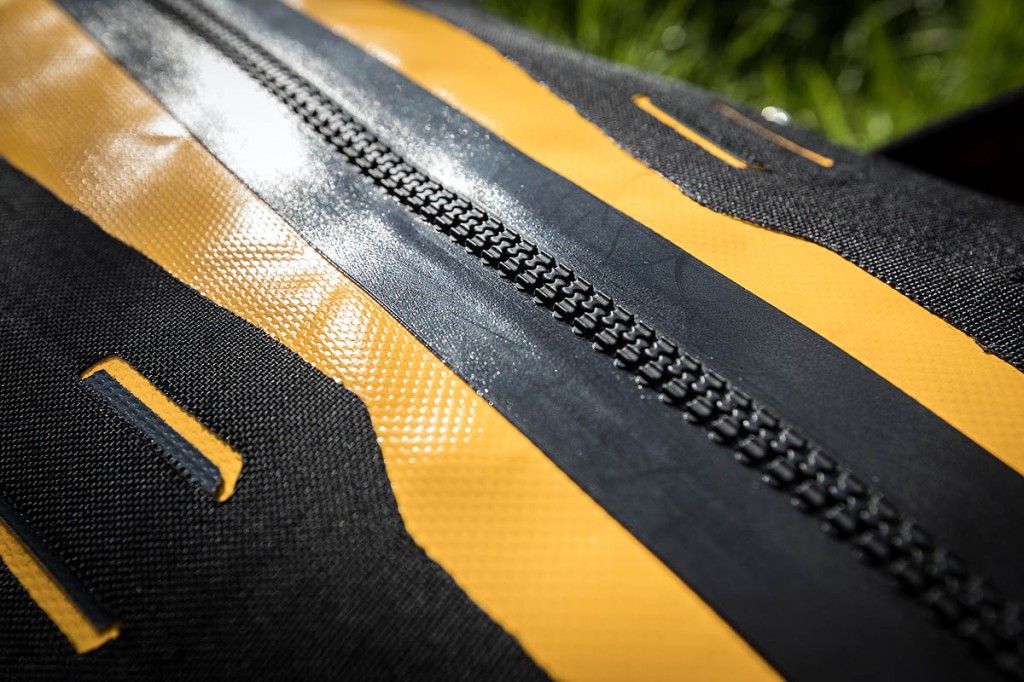
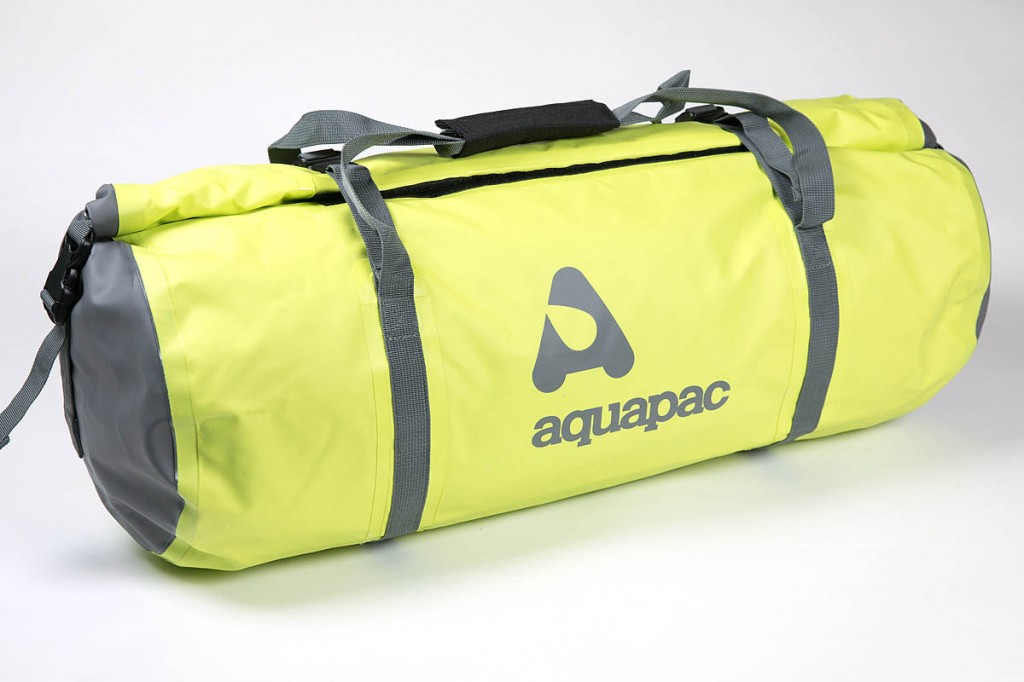
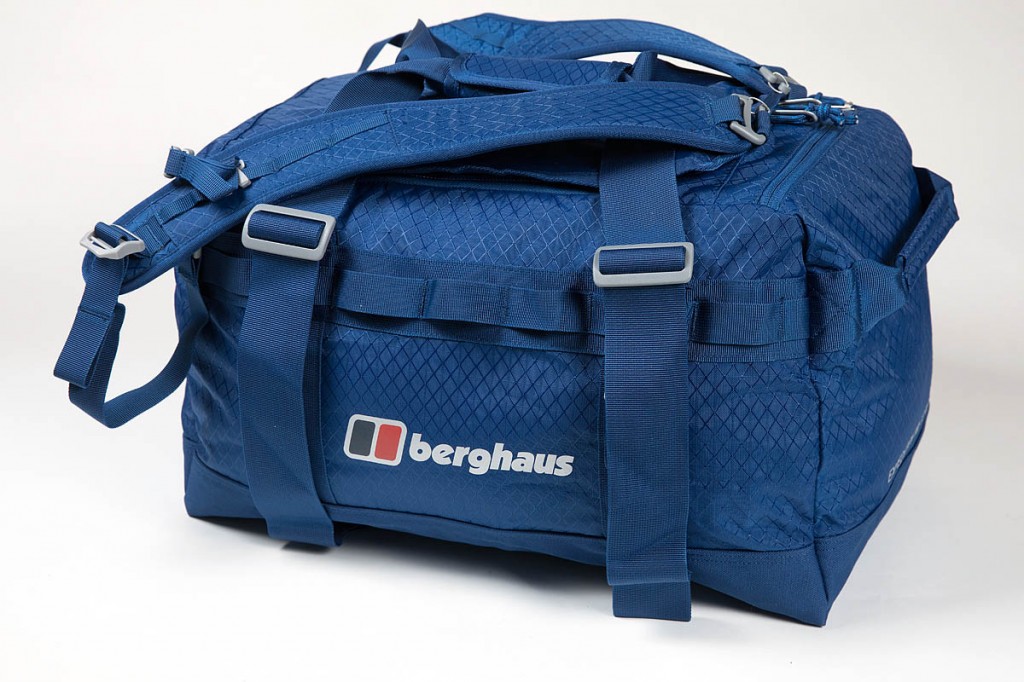
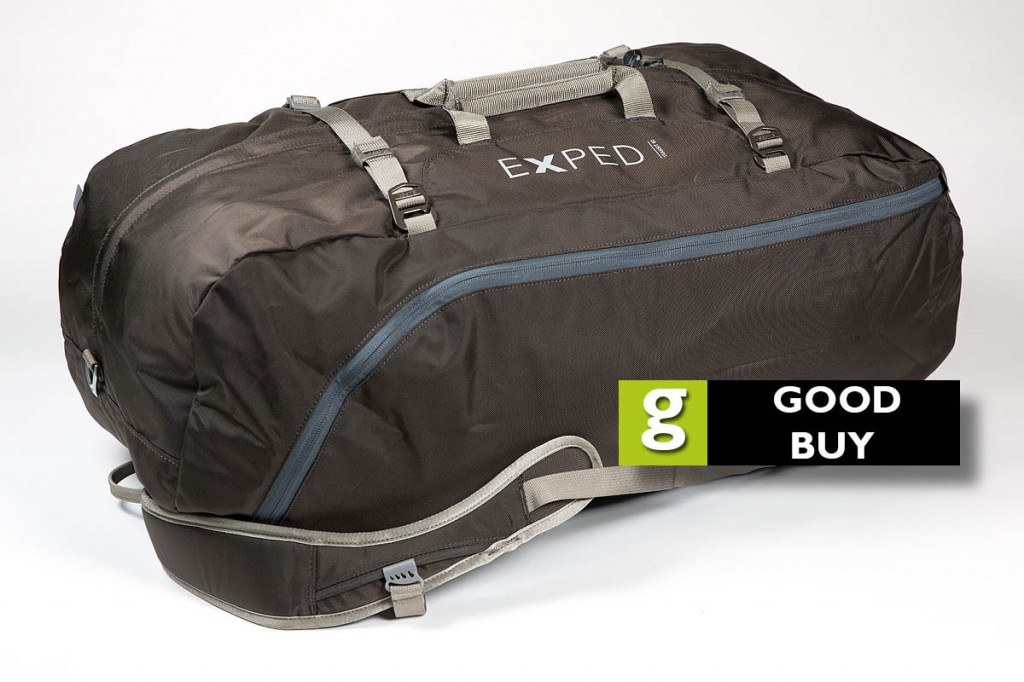
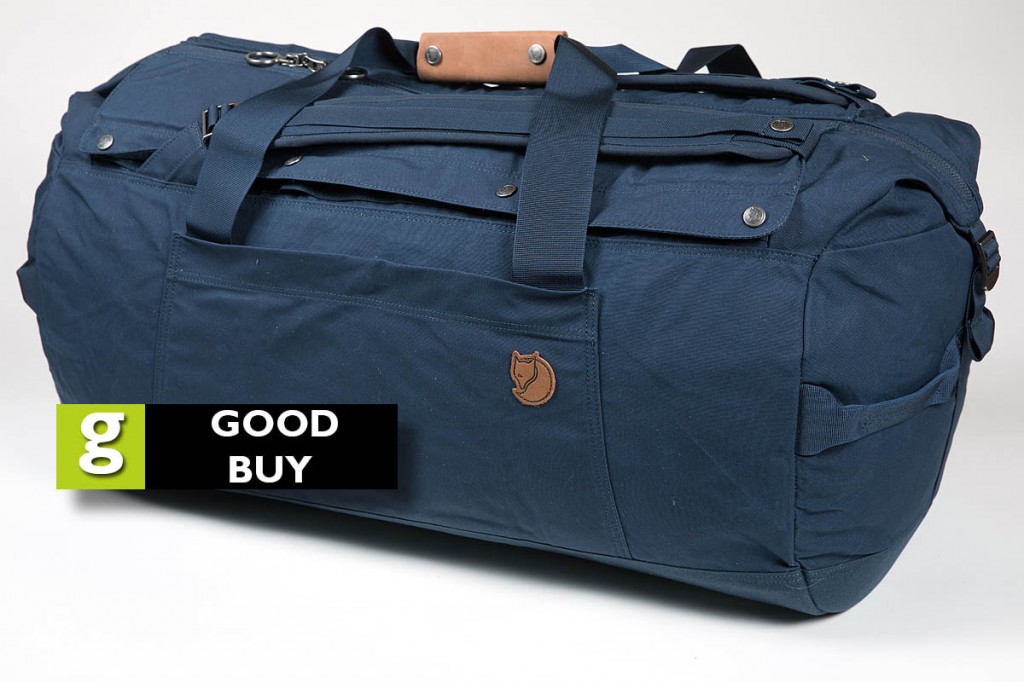
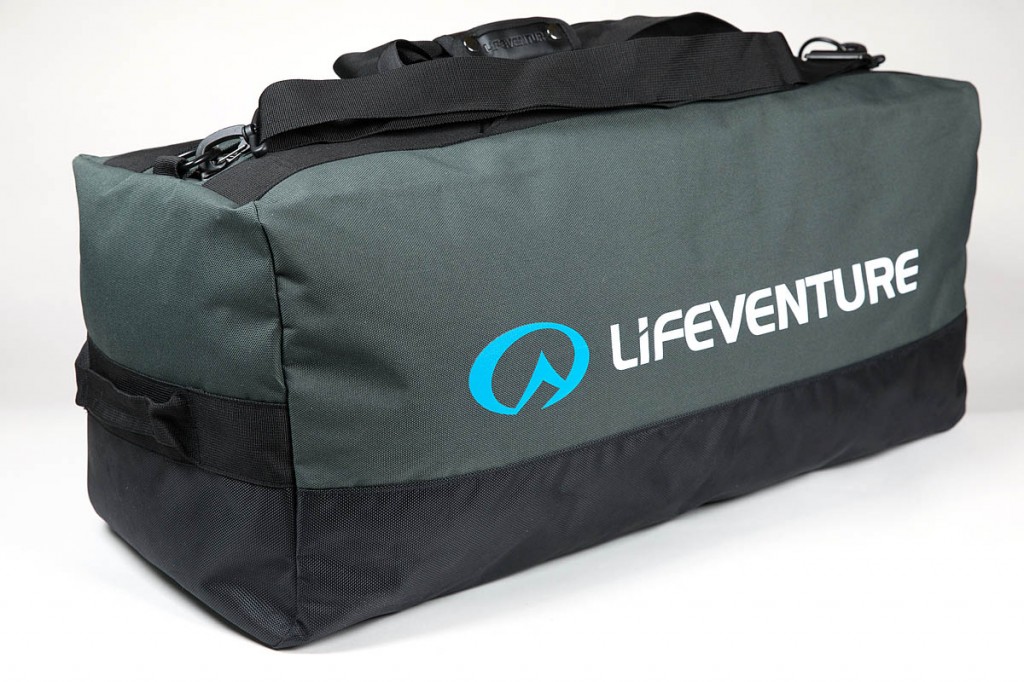
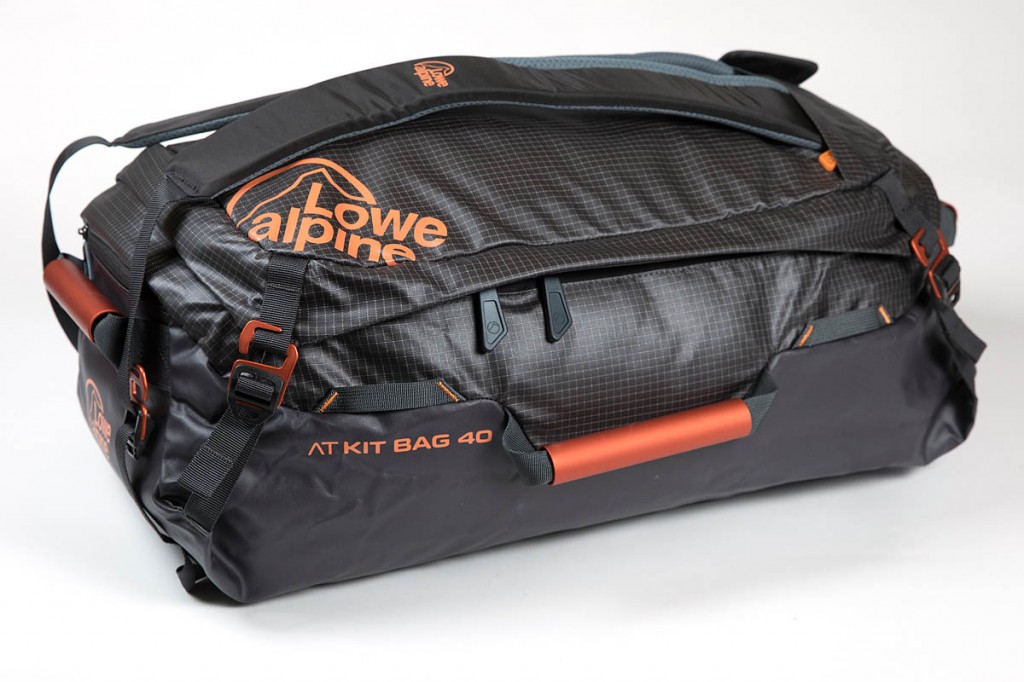
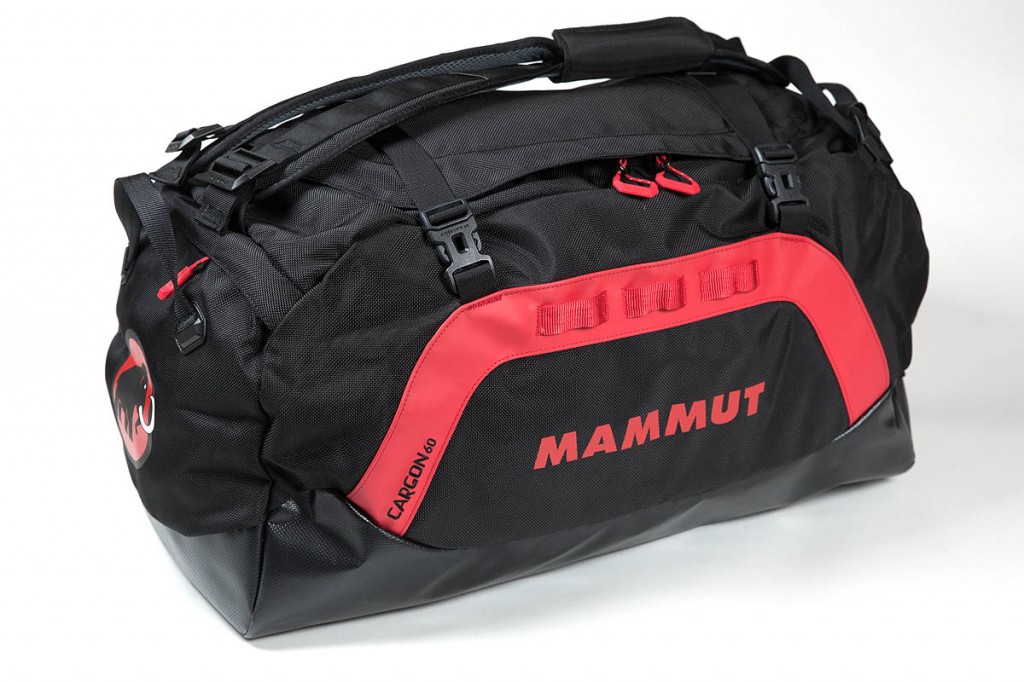
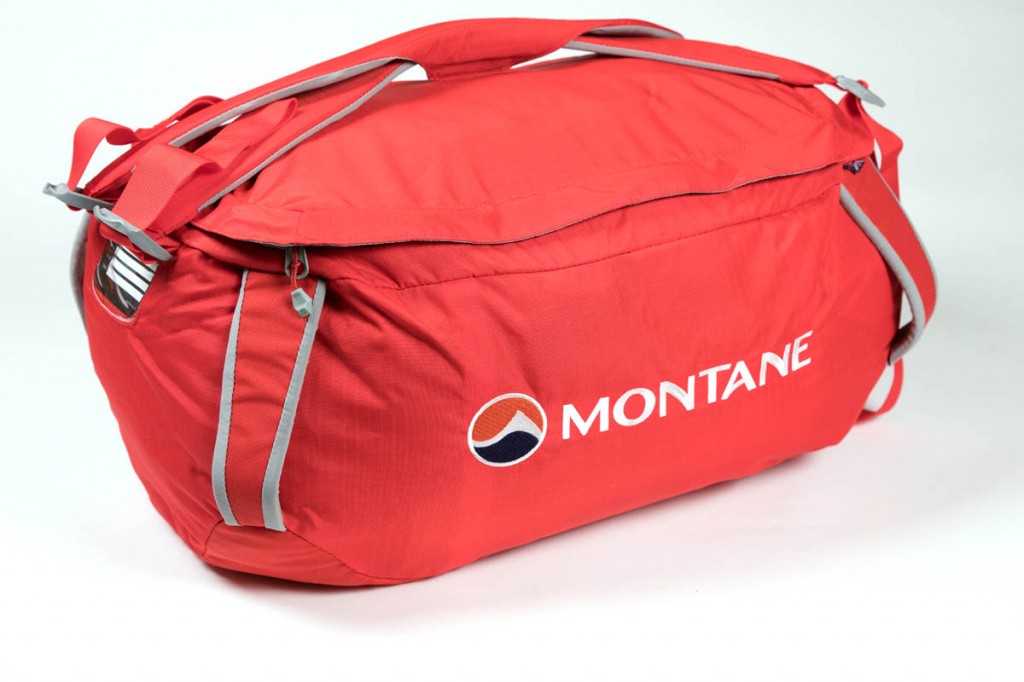
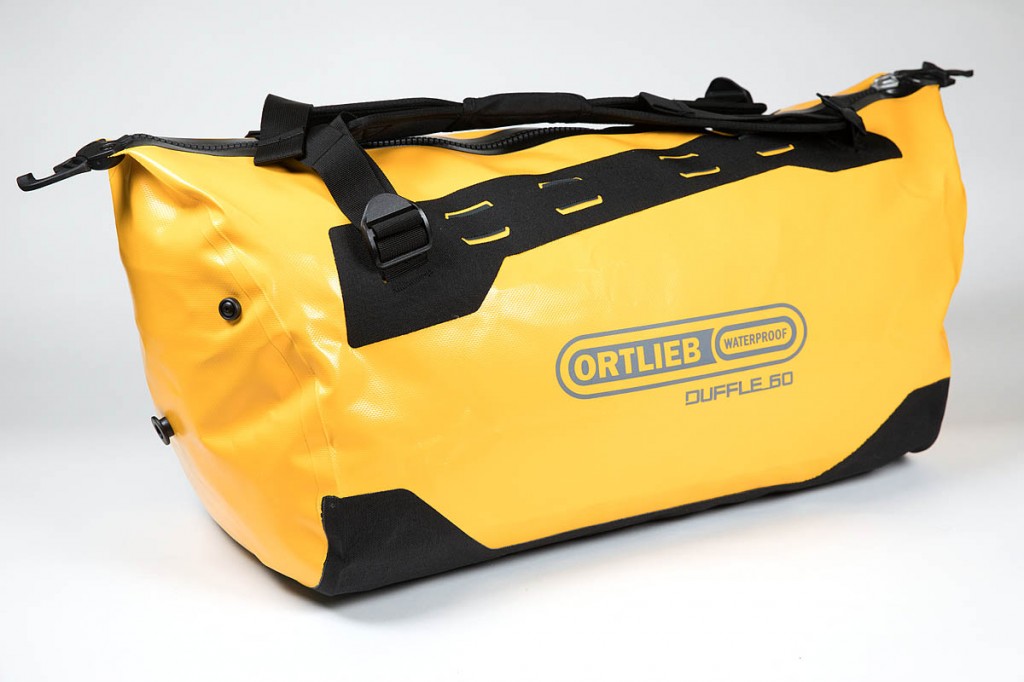
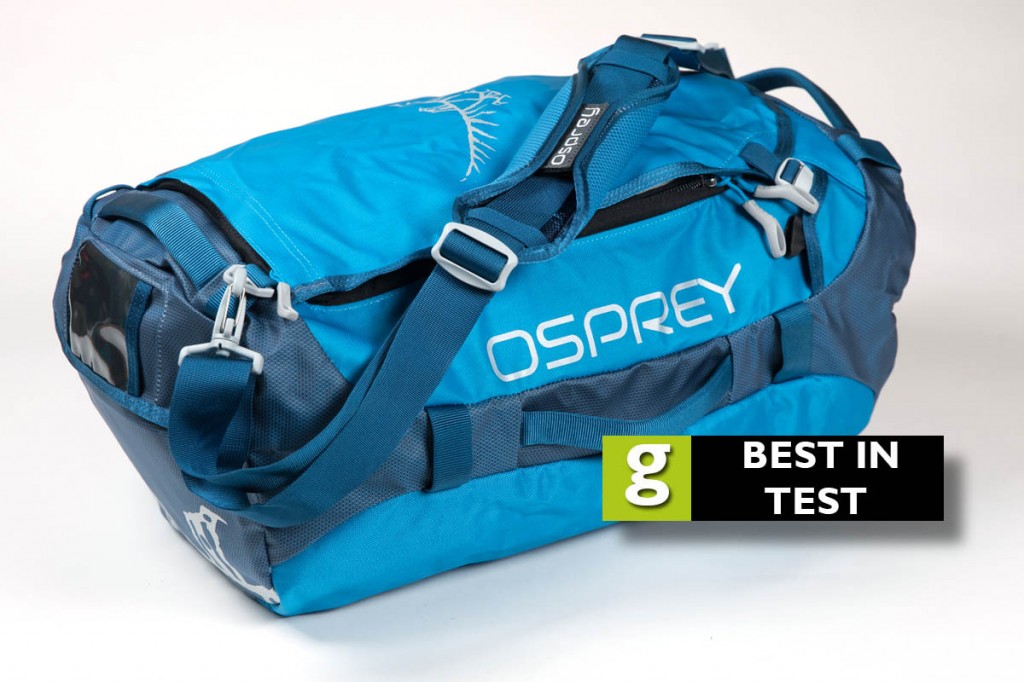
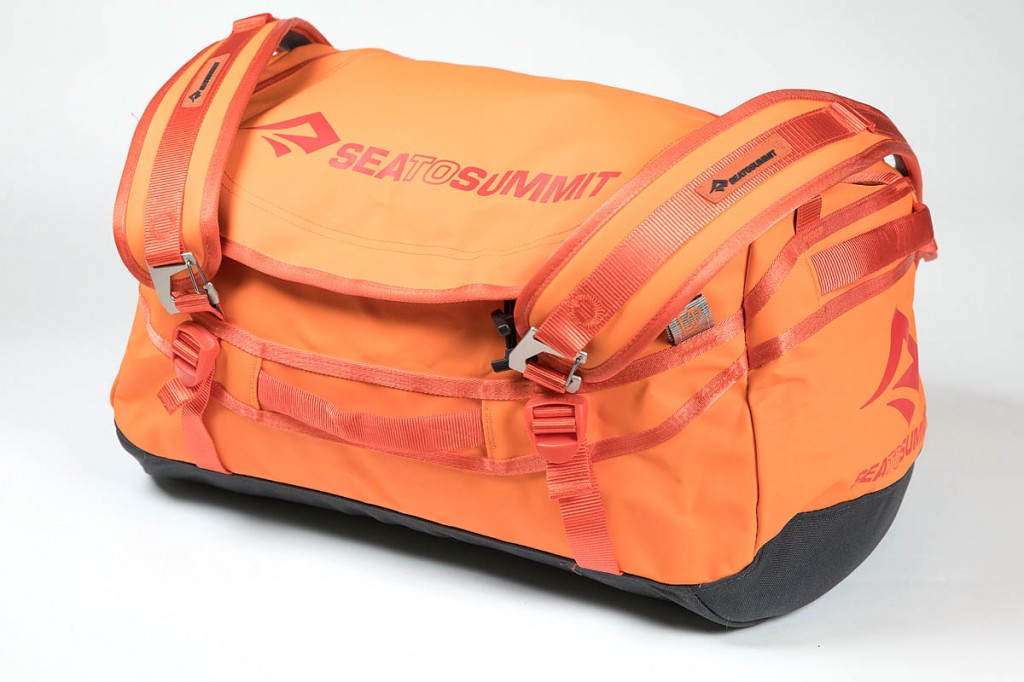
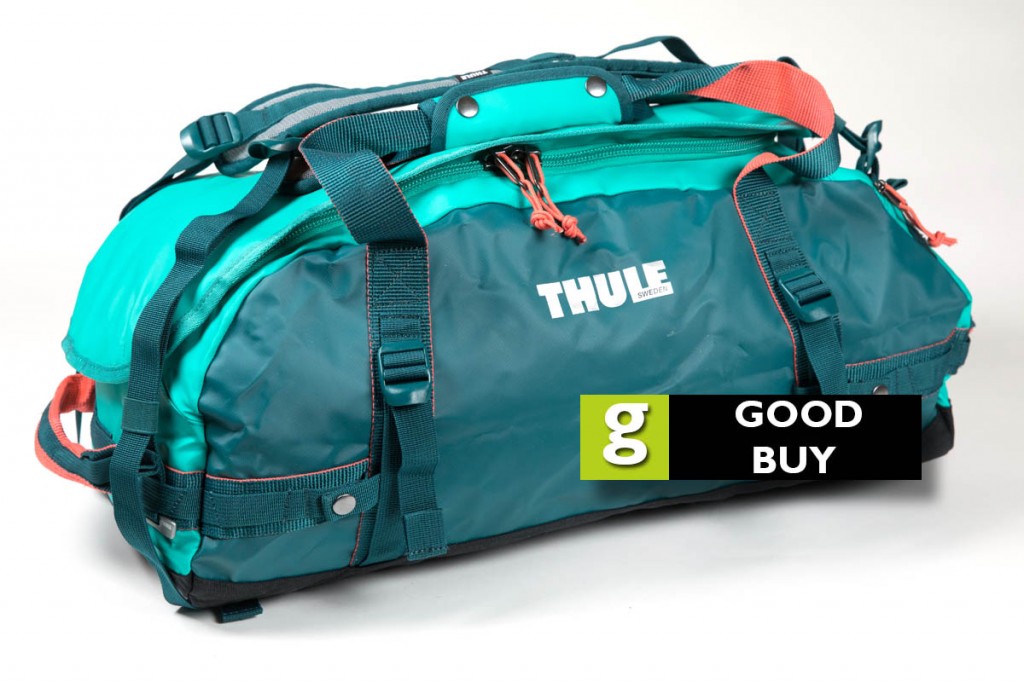
Andy Lawson
05 May 2018North Face Duffel bag anytime over these